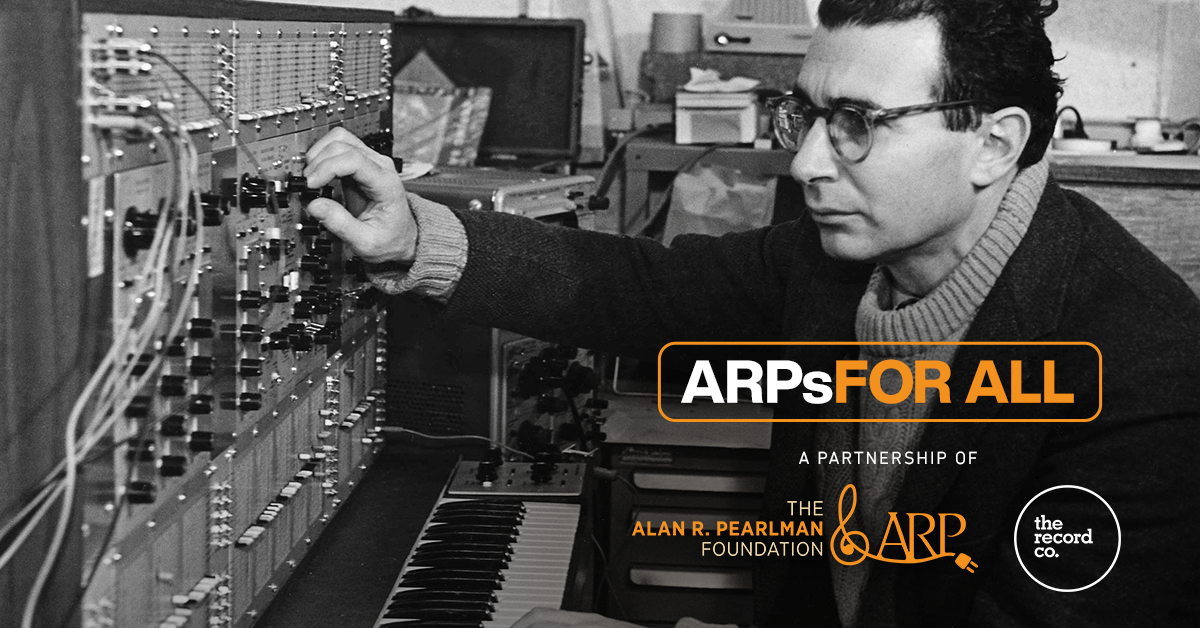I am standing on the corner of Christina and Needham in Newton, Massachusetts. Behind me an SUV holding several ARP Synthesizers, the keyboards that helped change the face of music forever. This is where much of the magic was made, the birthplace of ARP Instruments, Inc.
 Over fifty years ago, my father, Alan R. Pearlman started making ARP synthesizers at what was then Tonus, Inc. They were made by hand, at a little cinder block warehouse at 45 Kenneth. Their success warranted a move to larger facilities, and eventually to an even larger space in historic Lexington, Mass. These moves were a simple puddle jump when compared to the distance that his instruments would travel, and the impact they’d have. ARP Synthesizers would spend more than a decade making some of the most iconic music synthesizers ever.
Over fifty years ago, my father, Alan R. Pearlman started making ARP synthesizers at what was then Tonus, Inc. They were made by hand, at a little cinder block warehouse at 45 Kenneth. Their success warranted a move to larger facilities, and eventually to an even larger space in historic Lexington, Mass. These moves were a simple puddle jump when compared to the distance that his instruments would travel, and the impact they’d have. ARP Synthesizers would spend more than a decade making some of the most iconic music synthesizers ever.
 Now, I am bringing these instruments to their new home in Boston, but considering these instruments have been all over the world, this is a homecoming celebration.
Now, I am bringing these instruments to their new home in Boston, but considering these instruments have been all over the world, this is a homecoming celebration.
ARPs around the World
If you have a pulse and have listened to music made after 1971, you’ve been impacted by ARP synthesizers. From Japan’s Yellow Magic Orchestra, to Venezuela’s universities; from the studios of The Who’s Pete Townshend, and master screen composers like John Williams and Vangelis; From the stages of The Rolling Stones with Billy Preston on keys, The Ohio Players, Funkadelic, Rufus & Chaka Khan. David Bowie used them extensively on his Berlin Trilogy, You’ve also heard them in seminal works from Herbie Hancock, Prince, Depeche Mode, Kraftwerk, Nine Inch Nails and Erasure. Just to name a few.
ARPs in Space
If you are a science fiction fan, chances are you heard (and saw) an ARP 2500 in Close Encounters of the Third Kind’s famous final scene, or heard an ARP 2600 as the voice of R2D2 in Star Wars. If you’ve seen “Stranger Things,” you’ve also heard ARP synths setting the mood.
Synthesizers Then and Now
Though some consider synthesizers to be “artificial” compared to other instruments, the artistry involved in playing or creating sound with a synthesizer is just as real as any other instrument.
Analog synthesizers, such as the first popular instruments from ARP, Buchla and Moog, use electrical voltage to create audible sound. This sound can then be manipulated in a myriad of ways, usually with knobs, sliders, patch cords, or other physical controls. This experience inspires a feeling of limitless potential and originality. By adding a keyboard (or any other controller), a player can combine their sound design with musical virtuosity.
With a combination of events that included a burst of new instruments by Japanese companies, the worldwide shift to digital synthesizers and later software synthesizers, these analog instruments grew to be seen as outdated. Folxs starting off in the last 15 years probably haven’t ever used one.
In recent years, love for analog synthesizers have resurfaced, and it’s more than just nostalgia. Many people missed the flexibility, physicality, and possibilities that analog offered. In response many companies are producing either clones or reproductions of some of the most beloved synths, and a thriving vintage market with extremely high price tags exceeding the original cost have placed these beauties far out of reach for most music makers.
ARPs for ALL
My father was a generous, kind person who extolled the virtues of education and mentorship and practiced what he preached. He was known to lend instruments to friends, students, young musicians and his employees. His hope was to create the opportunity for invention, creation and discovery. The Alan R. Pearlman Foundation honors his legacy through creating educational and artistic opportunities for musicians, particularly young and underfunded music makers.
ARPs for All is a partnership between The Alan R. Pearlman Foundation and The Record Co., a Boston-based, not-for-profit community rehearsal and recording space. Both of these 501(c)(3) organizations share the goal of eliminating all barriers for any musician who has a desire to perform and create.





